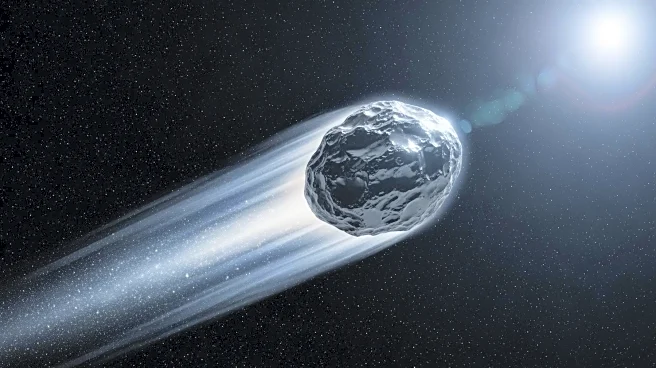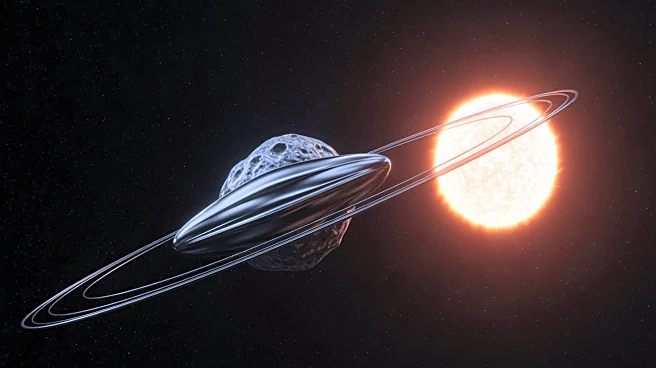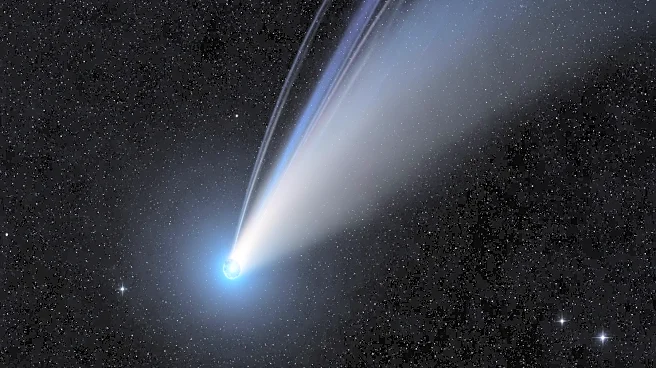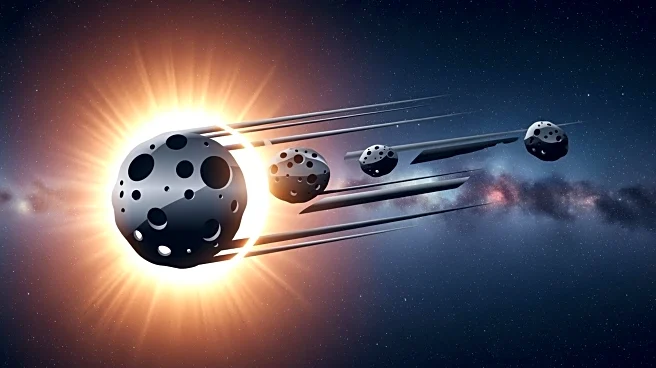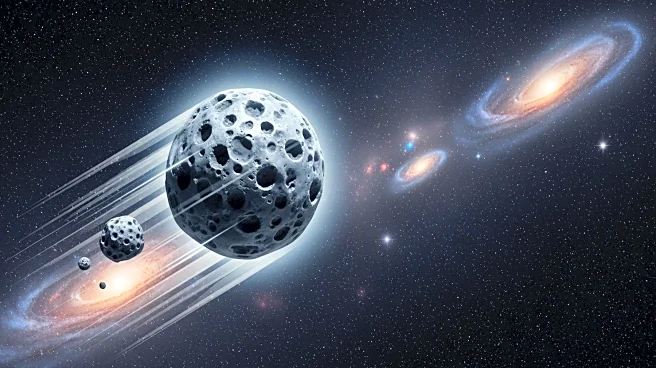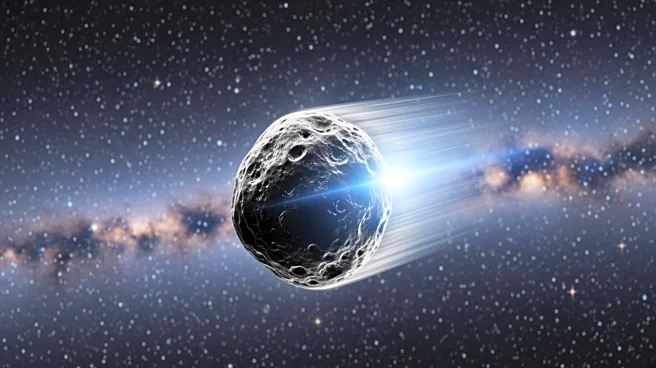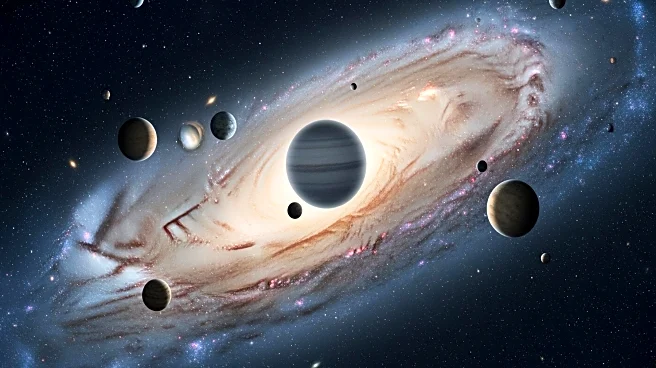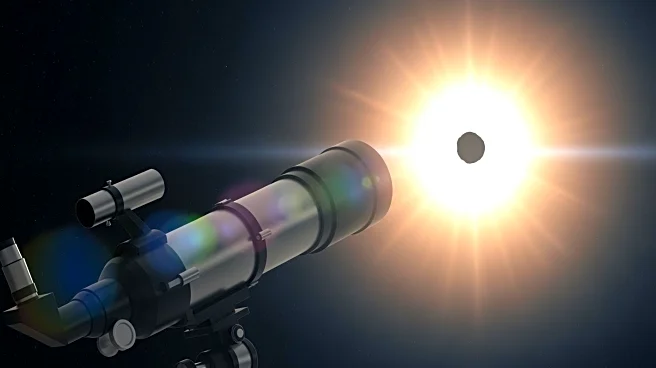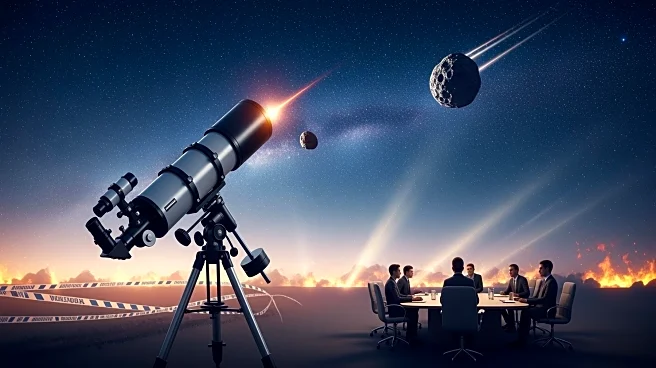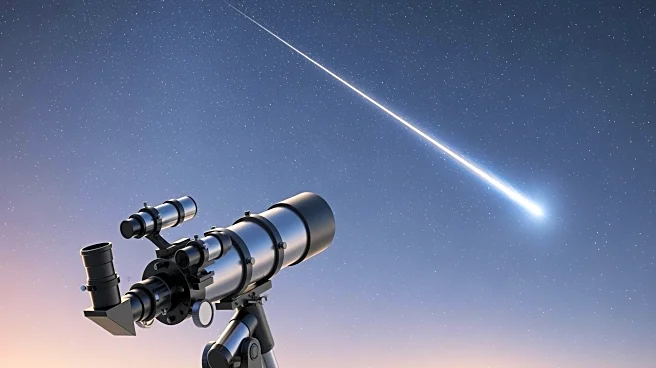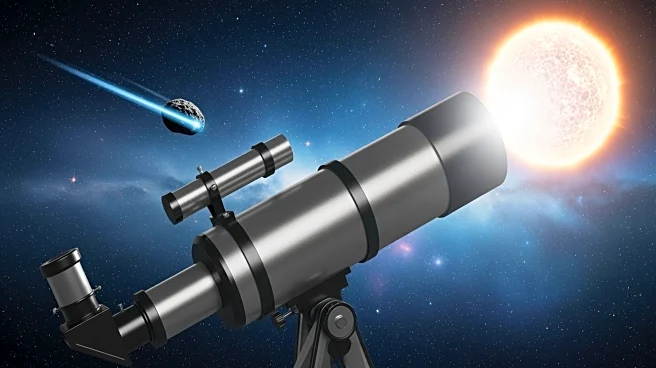What's Happening?
Astronomers have identified an asteroid, named 2025 SC79, with the second-fastest orbit in the solar system. This asteroid completes its orbit around the sun in just 128 days, making it one of the few
known objects with an orbit inside Venus. The discovery was made by Carnegie Science astronomer Scott S. Sheppard on September 27, 2025. The asteroid, approximately 2,300 feet in diameter, crosses Mercury's orbit during its rapid journey around the sun. The sighting was confirmed using the National Science Foundation's Gemini telescope and Carnegie Science's Magellan telescopes. Currently, 2025 SC79 is traveling behind the sun and will remain invisible to telescopes for several months. Further research is needed to understand its composition and origin, as well as how it withstands the intense heat near the sun.
Why It's Important?
The discovery of 2025 SC79 is significant because asteroids with orbits close to the sun are challenging to detect and can pose potential impact hazards to Earth. These 'twilight' asteroids are only observable during specific times when the sun is about to rise or set. Understanding the trajectories and characteristics of such asteroids is crucial for planetary defense and for gaining insights into the history of the solar system. The ability to detect and study these objects can help scientists develop strategies to protect Earth from potential asteroid impacts.
What's Next?
As 2025 SC79 continues its orbit, astronomers will aim to gather more data once it becomes visible again. This will involve studying its composition and trajectory to assess any potential threat it may pose to Earth. The research could also contribute to broader efforts in understanding the dynamics of asteroids within the solar system. Scientists will continue to monitor similar asteroids to improve detection methods and enhance planetary defense strategies.
Beyond the Headlines
The discovery of asteroids like 2025 SC79 highlights the importance of advancing astronomical technology and methods for detecting celestial objects that are difficult to observe. It underscores the need for international collaboration in space research to address potential threats and to expand our knowledge of the solar system's formation and evolution.
